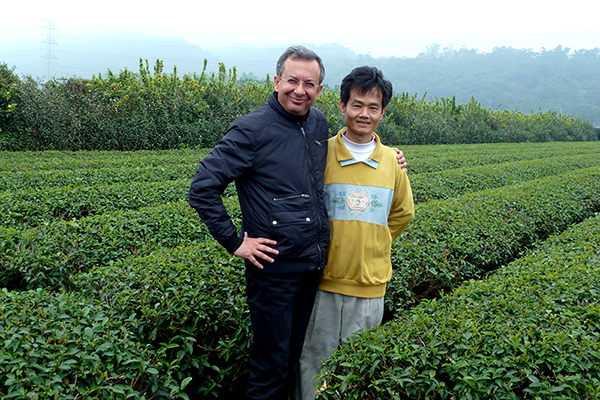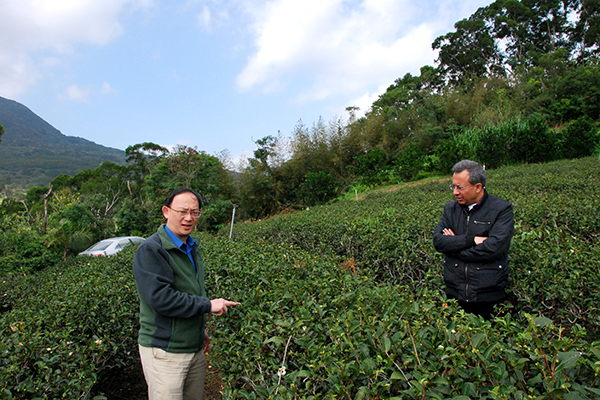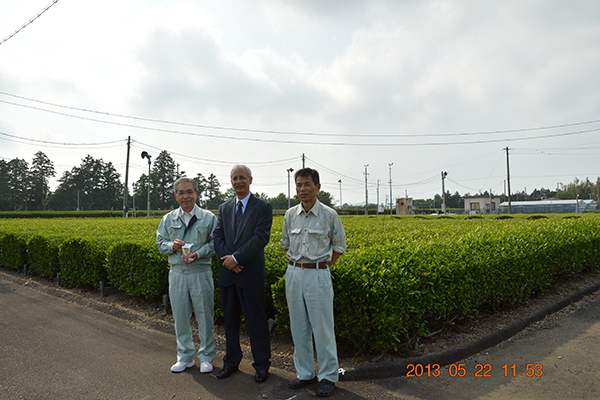Our Story
“Teaism is the art of concealing beauty that you may discover it, of suggesting what you dare not reveal”
Okakura Kakuzō 岡倉 覚三 (also known as 岡倉 天心 Okakura Tenshin) (1862 - 1913) / The Book of Tea
In early 2000 a group of friends and family sat for lunch in Kathmandu. Small talk tended towards Mount Hermon School, Darjeeling where we had studied and spent our childhood. Naturally, nostalgia for the salad days flooded in. Our school was set amidst tea gardens. Often the aroma of tea from Tukvar, Singtom and Phoobshering suffused through the crisp mountain air. The vista of green tea plants extending from the school play grounds all the way down to the Teesta valley and the melancholic Nepali love songs of the tea pluckers wafting up the valley were still vividly fresh - as fresh as morning cuppa of high mountain tea. We may not have realized it then, but tea had subliminally become synonymous with all the good memories from our school days.
Following lunch, two of us, (alumni and brothers, Lochan and Bachan) thought that opening a unique tea garden in east Nepal would be a venture that would connect us emotionally to our childhood. We knew we were facing obstacles as we had no experience in the tea industry. However, inspired by our school memories, we began investigating and exploring in order to set up a tea garden with a difference: one that could be an innovator in making excellent and perhaps even unique teas. We wanted to throw out the rule books and create our own rules wherever and whenever possible.
Our reconnaissance missions to the hills of east Nepal were quite extensive but ultimately rewarding as we scrutinised areas there to find a perfect home for our project. We did not rule out buying an existing tea garden and almost came close to buying one in Saptami, Panchthar. We also looked at other factors like climate change and future global warming and good tea business practices of other tea growing areas such as Japan and Taiwan. This concentrated our minds and over time a vision for our venture became more clear.
Finally, after all the hard work, a small tea garden of 75 hectares, spread in three divisions over the hills around the small town of Hile, Dhankuta was opened in 2001. This exclusive tea garden was named Jun Chiyabari, meaning “Moon-lit Tea Garden” in Nepali.
Much later on we came to realise that Jun character 純 in Japanese and Chinese and pronounced as Jun in Japanese means pure. That character fittingly embodies our philosophy of the purity of the Himalaya in our teas. When you drink tea from Jun Chiyabari you should feel the way poet Lu Tong of Tang felt when he drank tea.
..... The sixth bowl makes me one with the immortal, feathered spirits.
The seventh conveys such pleasure I am overcome,
Feeling only a pure wind rushing beneath my wings
– Lu Tong盧仝 (790–835) in his poem, “Seven Bowls of Tea”
Time Line of Jun Chiyabari
2000
- 19 April 2000 (2057 Baishak 07): The tea company is incorporated with HMG Nepal.
- May onwards: reconnaissance trips for identifying suitable land for tea in east Nepal beings. Bachan Gyawali and Lochan Gyawali make multiple trips to Dhankuta, Terathum, Sankhuwasaba, Ilam and Panchthar districts to find suitable land or buy an existing tea garden if on sale. Looked for land at higher elevations than normal given the coming of global warming.
2001
- 01 August 2001 (2057 Shrawan 17) First land purchased in Ramche in Dhankuta district.
2002
- 03 January 2002 Contact established with Taiwanese tea equipment manufacturer for the supply of Taiwanese tea manufacturing equipment.
- February - Land excavation at Nigale for factory, office and residence started in February end
- Hand manufacturing of tea started using modified pizza oven designed by Lochan & Bachan and manufactured in Kathmandu by cooking equipment manufacturer.
- May & June 2002 - Ramche, Bokre and Nigale tea planting started.
- 27 November 2002 - First sale of tea of 37 kgs of Hand Rolled SFTGFOP1 in 3 chests to Dethlefsen & Balk, Hamburg, Germany through Ludwig Schroeder & Rudolph Hamann of Hamburg
- December 2002 - Taiwanese tea manufacturing machines imported.
2003
- Manufacturing with Taiwanese machines in current office building, Nigale.
2004
- June 2004 - Manufacturing starts in new factory building
- 10-12 October 2004 - Participated for the first time in Tea exhibition. Tea & Coffee World Cup Exhibition and Symposium, Singapore
- 21-24 November 2004 - First journalists and tea buyers from Germany visit Jun Chiyabari.
2007
- April 2007. Jun Chiyabari becomes the first tea garden in the Himalayan region to introduce vacuum sealing machine for bulk packaging of tea with Japanese vacuum sealers and 20 kgs foil bags from Japan.
- Completely stopped paper sample packets and wooden chests for bulk tea with the introduction of vacuum sealers and foil packaging.
2009
- 15-17 August 2009 - First foreign technique for manufacturing different type of tea. Japanese tea masters teach us what becomes Himalayan Imperial Black.
2010
- 26 March 2010 - Organic process initiated with IMO, Switzerland.
2011
- 13 December 2011 - IMO organic certified (under conversion).
2012
- 17 February 2012 (2068 Falgun 05) - changed the official name of the tea company to Jun Chiyabari Tea Garden Pvt Ltd.
- 30 May 2012 - First "Under Conversion" Organic lot exported to UK
- 06 August 2012 - Fully certified organic by IMO.
- 15 October 2012 - First fully certified organic tea exported Germany
2013
- 01-06 October 2013 - Japanese and Taiwanese teams teach new techniques for manufacturing different types of tea.
2014
-
- 29 May - 01 June 2014 - Japanese team to teach new techniques for manufacturing different types of tea and follow up on the progress from 2013 visit.
2015
- Change of heater dryer. Six foot Sirocco heater removed & replaced by four foot heater dryer.
2017
- 29 August – 01 September - Organic certification audit by Ecocert of France for first time in lieu of IMO Switzerland under NOP-EOS-JAS standards.
2018
- 22 – 27 August 2018 Visit by experts from Japan to study the possibility of mechanisation of plucking.
2019
- 10 April 2019 – Second visit of Japanese experts for mechanical plucking and field preparation for mechanical plucking.
2020
- 17 - 24 February 2020 – Installation and commissioning of Senvec Colour & Vacuum sorting and cleaning machine
- 03 March 2020 – Start of normal and mass sorting and cleaning.
- 05 – 08 March 2020 – Installation and commissioning of the Enseki drying machine.



